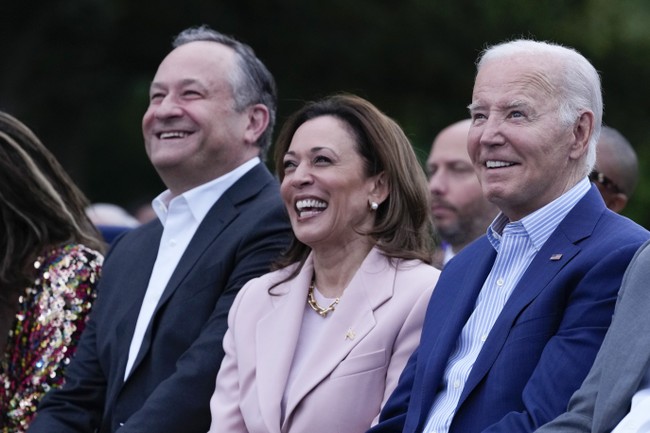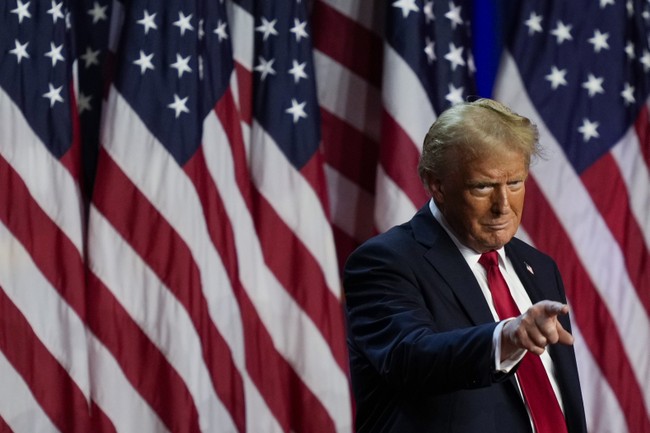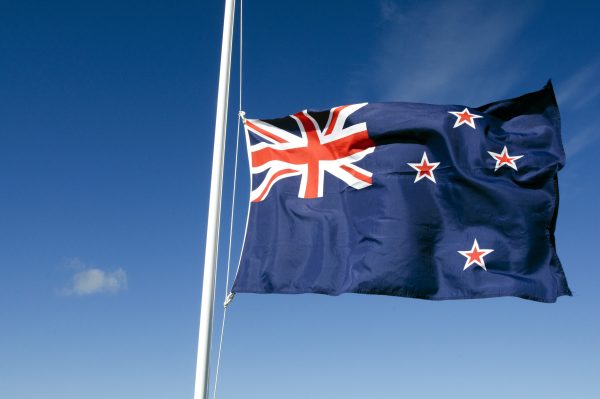Frank DeAngelis, the former principal of Columbine High School, wears two silver medallions around his neck at all times: a crucifix and a Virgin Mary pendant. He wears them because they keep him tethered to reality. Every time DeAngelis hears about a mass shooting in America, he squeezes the cold metal between his fingers. The sensation helps him stay in the present, preventing his thoughts from darting back to that day in 1999 when two armed teenagers killed 13 people at his school in Colorado—when he encountered one of the gunmen in the hallway, and watched his students evacuate the building with their hands on their head.
DeAngelis is familiar with the heavy emotional burden carried by principals and other school leaders after mass shootings. And for the past two decades, one of his goals has been to make sure that those leaders do not have to carry it alone. DeAngelis, who is 67, soft-spoken, and reflective, is one of the founders of the Principal Recovery Network, which is pretty much exactly what it sounds like—a support group for current and former principals who have experienced shootings at their schools. That there is even a need for such a deeply niche, macabre club—that enough people are affected by school shootings in America that they can be sorted into subcategories—is unsettling enough. What’s worse is that every year, this group, with its unfathomable cost of entry, has more and more work to do.
The PRN is a club that no one wants to belong to. But its existence is a necessary reminder that, even after the news crews rumble out and the nation’s attention turns elsewhere, school-shooting survivors and the people who care for them do not have to pick up the pieces alone. “In the PRN, when we say we know what you’re feeling, we really do,” DeAngelis told me. “We’ve all been through it.” The PRN’s 22 members are working on a manual to help principals lead their schools through recovery after a shooting. So far, the group has mostly steered clear of politics, but it’s getting more and more desperate for some kind of action.
Although the Principal Recovery Network wasn’t officially formed until 2019, its origins date back two decades. In the days after the attack at Columbine, a man named Bill Bond called DeAngelis. Bond was the principal of Heath High School, in Paducah, Kentucky, where three students had been killed in a shooting in 1997. “He reached out and said, ‘Frank, here’s who I am. You don’t even know what you need right now, but here’s my number,’” DeAngelis remembers. When DeAngelis called him back, Bond listened to his fears and concerns, and gave him advice on how to move forward. Over the next several years, the two did the same for other principals, including Andy Fetchik, the former principal at Chardon High School, in Ohio; Kathleen Gombos, who became principal at Sandy Hook Elementary School, in Connecticut, after Dawn Hochsprung was murdered in the 2012 shooting there; and Ty Thompson at Marjory Stoneman Douglas High School, in Florida. “Hi, this is Frank DeAngelis, the former principal of Columbine High School,” he always began. “I’m here if you have questions.”
Many principals did not respond to the call for a few days, sometimes even weeks. But when they did, DeAngelis listened, and talked them through their next steps—when to set up a full-faculty meeting, for example, or how to go about reopening the school building. In the spring of 2019, DeAngelis formalized the loose network of school leaders into the PRN, under the umbrella advocacy organization the National Association of Secondary School Principals. The PRN, which has gained two official members since 2019, meets a few times a year, on Zoom or in person, and spends an annual Day of Action on Capitol Hill in Washington, D.C., urging members of Congress to support school-safety programs and violence-prevention measures.
During meetings, the principals share what they’ve been through—how their nerves have been totally frayed; how their anxiety can get so intense that they wonder whether they’re having a heart attack; how they sometimes feel like completely different people than they were before the shooting. “I don’t talk to my friends and family about it. I don’t talk to anyone about it,” Matthew Hicks, a former assistant principal of Noblesville West Middle School, in Indiana, told me. A gunman at Hicks’s school injured a teacher and a student in May 2018. For a long while afterward, Hicks couldn’t be in a crowded space without needing to locate every exit, or confirm that a defibrillator was on hand. “You feel like you’re losing your marbles,” he said. To have a group of people who understand that feeling—“it’s pretty amazing.”
Members of the PRN, some of whom have taken other jobs over time, trade tips for moving forward after shooting events. The network helped George Roberts, a former principal of Perry Hall High School, in Baltimore County, anticipate the kinds of reactions his staff might have to the shooting that injured one of his students in 2012. “Some [teachers] had been on lockdown in a dark closet with kids for three to four hours. How do you deal with that trauma?” he said. In the aftermath of a shooting, community members often demand changes at the school, such as added fencing, metal detectors, or even arming teachers. The PRN helps principals respond to those requests, Roberts said. Elizabeth Brown, who took over as principal shortly after a 2018 shooting at Forest High School, in Ocala, Florida, followed advice she got from other principals in the network: For the first 12 months after the attack, which injured one student, Brown focused on adding fun and levity back into the school culture, with field days and prizes and performances put on by administrative staff.
The PRN does not do much in the way of gun-control advocacy. In the past, the group has urged lawmakers to fund and strengthen federal programs like Project SERV, which offers schools funding following violent or traumatic events. More recently, members have asked lawmakers to try a new approach—any new approach—that might help mitigate gun violence. “We beg you: Do something. Do anything,” they said in a statement after a shooter recently killed 19 children and two adults at Robb Elementary School, in Uvalde, Texas. Members of the group have different political views, Hicks told me, but they’re all eager for legislators to take action. “I don’t care which variable they start with. They just need to pick one,” he said.
The PRN also is working on what it calls a “Guide to Recovery” to streamline its advice for school leaders. The draft, which was co-written by various members and is set to be released publicly in August, starts by reminding principals of two things: “You are not alone, and there is no established timeline for recovery.” The eight-page document is devastating in its detail. It includes best practices for vetting outside trauma specialists for counseling after a shooting; it suggests a “reunification day” to allow students to reenter the school building comfortably, on their own terms; it recommends using the phrase annual remembrance instead of anniversary for the one-year mark after the shooting, to avoid sounding too celebratory; and it explains that leaving chairs empty at graduation might be triggering to surviving students.
The document is heart-wrenching to read, above all, because the wisdom it dispenses is informed by real-life experiences—and meant to influence future ones. Because it’s all but certain that there will be more shootings. More children squeezed under their desks in the dark, more frantic teachers shielding them with their bodies, and more principals left to figure out how to possibly move on. DeAngelis, who now consults on school safety and emergency management, says he’ll always be willing to help educators and school leaders in the aftermath of mass-shooting events. But he worries that too many Americans have grown numb to them. “It’s like they’re not shocked,” he said. “It’s How many this time? That scares me.”
Late last month, DeAngelis called and left a message for Mandy Gutierrez, the principal of Robb Elementary. She will be spending the next several weeks grieving with her staff, attending memorials, and figuring out what’s next for the school building. DeAngelis and the rest of the members of the PRN have done all of this before. They’ll be there for her if she needs them.





















Discussion about this post